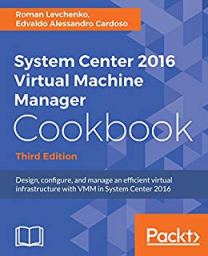Home
> Microsoft, Virtualization > Hyper-V , XenServer, vSphere Comparison : Scalability,Performance;Density
Hyper-V , XenServer, vSphere Comparison : Scalability,Performance;Density
Some folks are asking me about Citrix and Hyper and VMware comparison :
Scalability,Performance;Density
 1.XenServer 6.0 active VMs per host varies based on Server/VDI workload, with PVS/IntelliCache & HA on/off
1.XenServer 6.0 active VMs per host varies based on Server/VDI workload, with PVS/IntelliCache & HA on/off
2.Maximum VMs on a Cluster (Resource Pool) on XenServer 6.0 based on a maximum of 50-60 concurrent protected VMs per host with HA enabled.
3.Host physical memory is capped at 32GB thus maximum VM memory is also restricted to 32GB usage.
4.For clustering/high availability, customers must purchase vSphere
5.vSphere 5.0 Enterprise Plus is the only edition that supports 32 vCPUs. All others support 8 vCPUs within a virtual machine.
6.Maximum number of Virtual CPUs per Host is not documented in the Citrix XenServer 6.0 Configuration Limits documentation.
- XenServer 6.0 Information: http://www.citrix.com/site/resources/dynamic/salesdocs/Citrix_XenServer_6_Configuration_Limits.pdf
- vSphere Hypervisor / vSphere 5.0 Ent+ Information: http://www.vmware.com/pdf/vsphere5/r50/vsphere-50-configuration-maximums.pdf and http://www.vmware.com/products/vsphere-hypervisor/faq.html
High Availability & Resiliency
1.XenServer 6 provides Automated VM Protection & Recovery in the Advanced edition and higher
2.XenServer 6 provides a Site Replication capability in the Platinum edition, however replication is provided by a storage vendor, not inbox from XenServer hosts.
3.XenServer 6 provides HA in the Advanced edition or higher.
4.The vSphere Hypervisor has no high availability features built in – vSphere 5.0 is required.
5.VMware Data Recovery is available in Essentials Plus and higher vSphere 5.0 editions
6.vSphere Replication is a feature of VMware vCenter Site Recovery Manager (SRM), which is available in 2 editions and is a chargeable addition to vSphere 5.0
7.VMware HA is built in to Essentials Plus and higher vSphere 5.0 editions
8.VMware have made APIs publicly available, but actual application monitoring is not included
9.Features available in all editions that have High Availability enabled.
- XenServer 6.0 Information: http://www.citrix.com/English/ps2/products/subfeature.asp?contentID=2300456
- vSphere Hypervisor / vSphere 5.0 Ent+ Information: http://www.vmware.com/products/vsphere/buy/editions_comparison.html, http://www.vmware.com/products/site-recovery-manager/overview.html and http://www.yellow-bricks.com/2011/08/11/vsphere-5-0-ha-application-monitoring-intro/
1.Maximum VMs on a Cluster (Resource Pool) on XenServer 6.0 based on a maximum of 50-60 concurrent protected VMs per host with HA enabled.
2.High Availability/vMotion/Clustering is unavailable in the standalone vSphere Hypervisor
3.VMware does not support VM Guest Clustering using iSCSI storage.
4.VMware does not support VM Guest Clustering using File Based Storage i.e. NFS
5.VMware does not support the vMotion of a VM that is part of a Guest Cluster
6.VMware does not support the use of Memory Overcommit with a VM that is part of a Guest Cluster
7.No XenServer documentation can be found that details the number of simultaneous live migrations over either 1GB or 10GB Ethernet.
- XenServer 6.0 Information: http://www.citrix.com/site/resources/dynamic/salesdocs/Citrix_XenServer_6_Configuration_Limits.pdf
- vSphere Hypervisor / vSphere 5.0 Ent+ Information: http://www.vmware.com/pdf/vsphere5/r50/vsphere-50-configuration-maximums.pdf, http://pubs.vmware.com/vsphere-50/topic/com.vmware.ICbase/PDF/vsphere-esxi-vcenter-server-50-mscs-guide.pdf
Also, comparing Hyper-V Windows 2008R2 with Hyper-V Windows 2012
Categories: Microsoft, Virtualization
HyperV, VmWare, XenServer







Ok, this is an interesting high level overview of the 3 (commercial) most well known ones.
I’m missing one very important function in this comparison: GPU Passtrough. Next year you’ll notice that 3D Graphics apps can be brought to the Cloud using different virtualization techniques. NVIDIA will release very high performance vGPU boards, called VGX and an own Hypervisor add-on.
ICR3ATE will release a commercial DaaS solution dedicted to 3d Graphics apps Q1 2013. This is all done with a GPU Passtrough function which can be found on XenServer 6.x. VMWare to follow.
We make use of state of the art tech from both Citrix & NVIDIA. Please have a look on http://www.icr3ate.nl
To make things clear, we are not related to either Citrix, nor NVIDIA. We do have a Beta partner status on both companies.
p.s. XenServer 6.1 is already in production for a couple of months. Updating your chart in a next cycle would make this infomation even more valuable